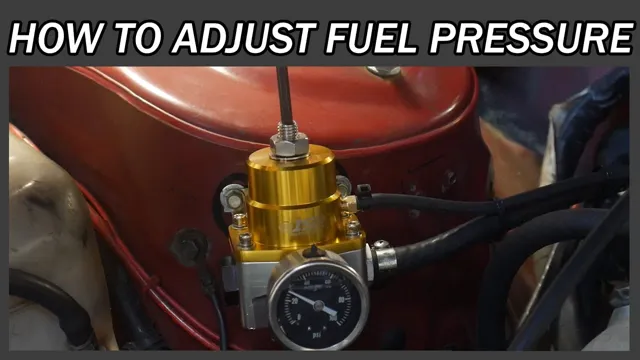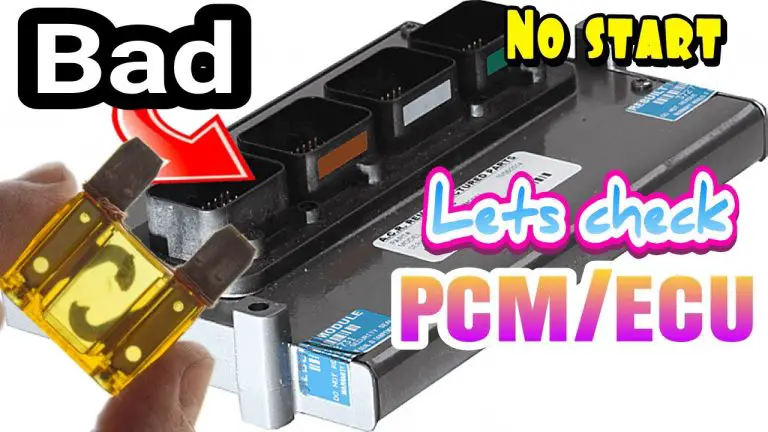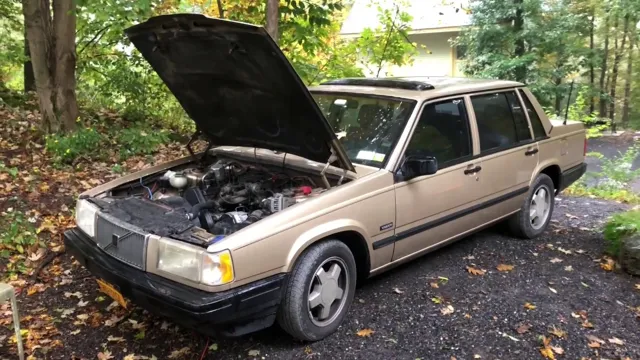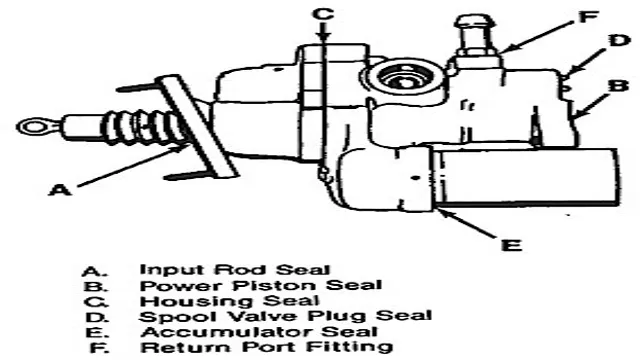5 Easy Steps to Adjusting Your Fuel Regulator Like a Pro: A Beginner’s Guide
Do you want to maximize your vehicle’s engine performance? One way to achieve this goal is by adjusting the fuel regulator. This essential component controls the fuel pressure to the engine, contributing to better fuel efficiency, smoother operation, and increased power output. However, adjusting a fuel regulator requires some expertise, knowledge, and tools, as making the wrong changes can lead to severe damages to your engine and fuel system.
In this blog post, we’ll discuss the basics of adjusting a fuel regulator, including the signs that you need to make modifications, the steps to follow, and some useful tips to ensure success. Whether you’re a seasoned mechanic or a DIY enthusiast, read on to learn more about this critical task and take your engine performance to the next level.
What is a Fuel Regulator?
A fuel regulator is a device that controls the amount of fuel flowing to an engine. It works by regulating the pressure of the fuel in the fuel line, ensuring that the engine receives the right amount of fuel it needs for optimal performance. Adjusting the fuel regulator can help improve the efficiency and power of an engine by ensuring that the fuel being delivered is not too little or too much.
To adjust a fuel regulator, you first need to disconnect the vacuum line, which controls the pressure in the regulator. Turning the adjustment screw clockwise will increase the fuel pressure while turning it counterclockwise will decrease it. It is important to adjust the fuel regulator slowly and carefully, making small adjustments at a time and checking the fuel pressure after each one.
This will help you find the optimal fuel pressure for your engine, improving its performance and fuel economy.
Explaining its Function
A fuel regulator is an essential component in a car’s fuel system that controls the fuel pressure to the engine. It ensures that the engine receives a consistent fuel supply under varying conditions, such as changes in altitude or temperature. Without a fuel regulator, fuel pressure would be unstable, which can cause damage to the engine or even lead to failure.
Imagine trying to pour water from a bottle without a lid versus one with a lid with small holes. The lid with holes controls the water flow, preventing overflow and maintaining a steady stream. Similarly, the fuel regulator regulates the fuel flow, preventing fluctuations in pressure and ensuring the engine gets the right amount of fuel.
It’s important to keep the fuel regulator in good condition to prevent problems, such as poor fuel economy or stalling. Regular inspections and maintenance by a professional mechanic can keep your car’s fuel system running smoothly and prevent costly repairs in the future.

Signs That Your Fuel Regulator Needs Adjustment
If your car is showing signs of poor performance, such as rough idling, stalling, or weak acceleration, it could be due to a faulty fuel regulator. This small but critical component in your vehicle’s fuel system is responsible for controlling the amount of fuel that is distributed to the engine. If it’s not working properly, your engine may be getting too much or too little fuel, resulting in the symptoms mentioned above.
If you suspect that your fuel regulator needs adjusting, there are a few signs you can look out for. For example, if you notice that your fuel pressure is fluctuating, or if your engine is running rich (meaning it’s burning too much fuel), it may be time to make some adjustments. To do so, you’ll need to locate and adjust the regulator screw.
However, it’s important to note that adjusting the fuel regulator should only be done by an experienced mechanic with the right tools and knowledge. Otherwise, you run the risk of causing more damage to your car’s fuel system.
Poor Fuel Efficiency
As a car owner, we all dread the moment when our fuel efficiency takes a nosedive and we start spending more on gas than we should. One possible culprit in such a scenario could be a malfunctioning fuel regulator. Signs of a bad fuel regulator include poor fuel efficiency, sputtering or stalling at low speeds, and unusual engine exhaust.
If you notice any of these signs, it’s best to get your fuel regulator checked and adjusted by a reputable mechanic. A fuel regulator is responsible for maintaining the proper pressure in your car’s fuel system so that the engine gets the right amount of fuel for optimal performance. If the pressure is too high or too low, it can lead to poor fuel economy and a host of other engine problems.
Think of your car’s fuel system as a garden hose that needs the right amount of water pressure to function correctly. Without a properly functioning fuel regulator, your car’s engine may suffer and ultimately cost you more money in repairs and gas. Keep an eye out for signs of fuel regulator trouble and ensure that your car is running at its peak efficiency.
Black Smoke from Exhaust
If you’ve noticed black smoke coming from your car’s exhaust, it’s important to act quickly. Not only is it bad for the environment, but it could be a sign that something’s wrong with your engine. One common culprit could be an issue with your fuel regulator.
This important component keeps a steady flow of fuel to the engine, ensuring it runs smoothly and efficiently. However, if it’s not adjusted correctly, it could lead to an excess of fuel entering the engine, resulting in black smoke. One tell-tale sign that the fuel regulator needs adjustment is if you notice your car is using more fuel than usual.
If this is the case, it’s important to get it checked out by a professional as soon as possible to prevent further damage to your engine. By making sure your fuel regulator is working properly, you can ensure your car is running smoothly and efficiently, while also doing your part to protect the environment.
Rough Idle or Stalling
If you’re experiencing a rough idle or your car is stalling, it could be a sign that your fuel regulator needs adjustment. The fuel regulator is responsible for regulating the pressure of the fuel system, ensuring that the fuel is delivered at the right pressure to the engine. If the fuel pressure is too high, it can cause the engine to run rich and result in a rough idle or stalling.
On the other hand, if the fuel pressure is too low, the engine may not be getting enough fuel, causing a lean condition that can also lead to rough idling or stalling. Therefore, adjusting the fuel regulator can make all the difference in keeping your car running smoothly. So, if you’re noticing any of these symptoms, it’s best to have your fuel regulator checked out by a professional mechanic.
Steps to Adjust a Fuel Regulator
Adjusting a fuel regulator can seem daunting at first, but with these simple steps, you’ll be able to do it in no time. Firstly, locate your fuel pressure regulator by referring to your user manual or performing a quick online search. Once you’ve found it, depressurize the fuel system by removing the fuse or relay for the fuel pump.
Next, using a wrench, loosen the locking nut on the regulator and turn the adjustment screw in a clockwise direction to increase fuel pressure or counterclockwise to decrease it. Finally, use a fuel pressure gauge to check the pressure and make any necessary adjustments until it falls within the manufacturer’s specified range. Once you’re satisfied with the pressure, re-establish the fuel system’s pressure by reinstalling the fuel pump fuse or relay.
With these simple steps, you’ll be able to adjust your fuel regulator to ensure your engine is running optimally, minimizing fuel consumption and maximizing efficiency.
Locate the Fuel Pressure Regulator
If you’re looking to adjust a fuel regulator, your first step is to locate it. The fuel pressure regulator is usually located near the fuel injectors on the fuel rail. Before making any adjustments, make sure you have the appropriate tools and safety gear ready.
Some regulators may require a special tool for adjustment, so be sure to check your vehicle’s manual before proceeding. To adjust the fuel regulator, you’ll need to turn the adjustment screw. However, it’s important to do this in small increments and to monitor the fuel pressure gauge closely.
Too much pressure can cause damage to your engine, while too little pressure can cause poor performance or engine stalling. By making small adjustments and monitoring the gauge, you’ll be able to find the sweet spot for your vehicle’s performance.
Test Fuel Pressure
Adjusting a fuel regulator might seem daunting for a novice. However, it is essential to ensure that the fuel pressure is adjusted correctly to maintain the smooth functioning of your car’s engine. Here are the steps to adjust the fuel regulator:
Test the fuel pressure to ensure that it is within the recommended range. The test can be performed using a fuel pressure gauge.
Identify the location of the fuel regulator, which is usually near the fuel rail. Loosen the locking nut on the fuel pressure adjustment screw.
Turn the screw clockwise to increase the fuel pressure or counterclockwise to decrease it.
Use the fuel pressure gauge to check the pressure again and ensure that it is within the recommended range. Tighten the locking nut on the adjustment screw to lock the pressure setting in place.
Remember that incorrect fuel pressure can lead to various engine problems, including reduced fuel efficiency and misfires. Therefore, adjusting the fuel regulator correctly is crucial for maintaining your car’s engine health.
Adjust the Fuel Pressure Regulator
Adjusting a fuel pressure regulator is an essential step in ensuring optimal engine performance. Here’s a step-by-step process to adjust a fuel regulator correctly: Step 1: Locate the fuel pressure regulator. It’s usually situated between the fuel pump and fuel rail.
Step 2: Check the initial fuel pressure with a fuel pressure gauge. To do this, connect the gauge to the fuel rail and turn on the engine. The gauge will provide an accurate reading of the current fuel pressure.
Step 3: Adjust the fuel pressure regulator according to your engine’s requirements. Follow the manufacturer’s instructions for adjusting the regulator clockwise or counterclockwise. Step 4: Recheck the fuel pressure with a pressure gauge and make any necessary adjustments.
Step 5: Test your engine’s performance to ensure that the fuel pressure readings are optimal. Adjusting a fuel pressure regulator can significantly change your engine’s performance. If you’re not familiar with the process, it’s best to seek assistance from a professional.
With all the necessary tools and knowledge, adjusting the regulator will aid in bringing out the best in your engine.
When to Seek Professional Help
Adjusting a fuel regulator can be a bit tricky, especially if you’re not well-versed in the functioning of this part. If you are experiencing issues with fuel pressure or fuel economy, adjusting the fuel regulator may be necessary. However, before attempting to do so, it’s essential to know what you’re doing to avoid further damage to your vehicle.
If you’re unsure how to adjust the fuel regulator properly, it’s best to seek professional help to avoid causing more significant problems. A professional mechanic has the knowledge, experience, and tools to diagnose the issue and make the necessary adjustments without causing any further damage. Attempting to adjust the fuel regulator without the necessary knowledge can result in expensive repairs.
Therefore, it’s always better to be safe than sorry by leaving the work to the professionals.
Conclusion
Adjusting a fuel regulator is a delicate process that requires patience, precision, and a keen sense of mechanical intuition. It’s like walking a tightrope between too little and too much fuel, where too little will leave your engine sputtering and too much will leave your wallet crying. But fear not, my gasoline-filled friends, with a little bit of know-how and the right tools, adjusting a fuel regulator can be as easy as pie.
.. or maybe a little more complicated than that.
So go forth, adjust your fuel regulator with confidence, and may your engine run smoothly ever after!”
FAQs
What is a fuel regulator and why is it important to adjust it?
A fuel regulator is a device that regulates the pressure of fuel that flows through the fuel system. It is important to adjust it because the pressure affects the performance and efficiency of the engine.
How can I tell if my fuel regulator needs to be adjusted?
Symptoms of a fuel regulator that needs to be adjusted include poor fuel economy, rough idle, hesitation or stalling, and black smoke from the exhaust.
Can I adjust the fuel regulator myself or should I take it to a professional?
It is recommended to have a professional adjust the fuel regulator, as it involves working with fuel and can be dangerous if done incorrectly.
How often should I have my fuel regulator adjusted?
The frequency of adjustment varies depending on the make and model of your vehicle, but it is typically recommended to have it checked and adjusted every 30,000 miles or so.






